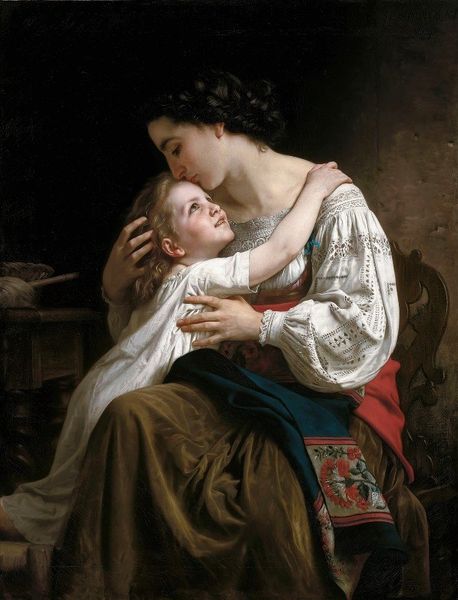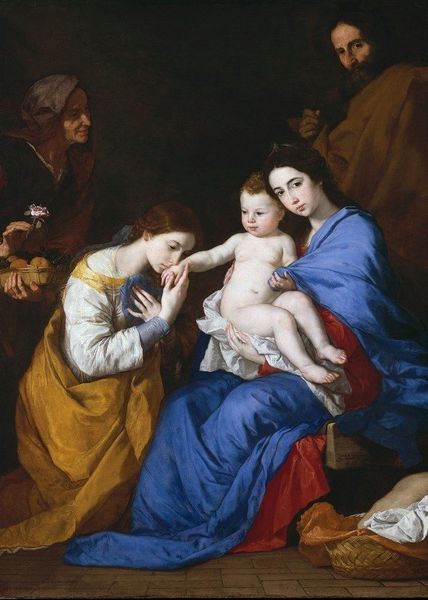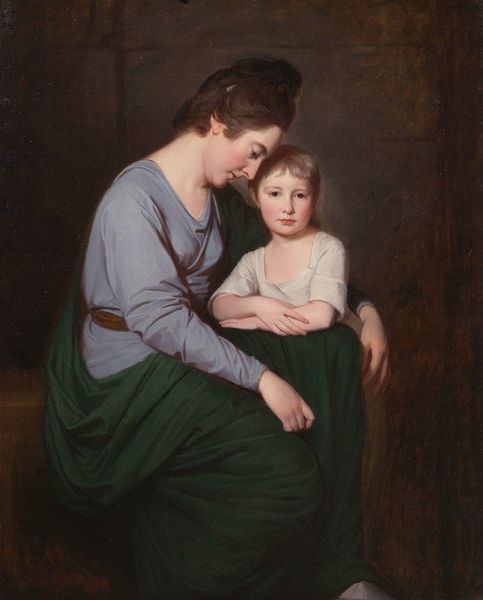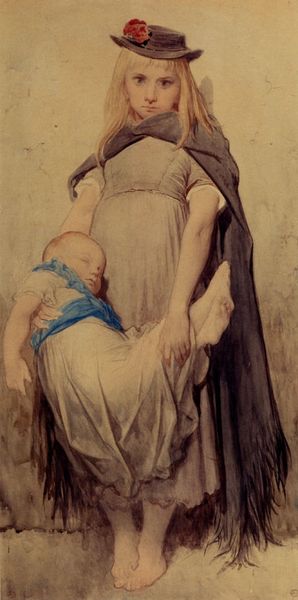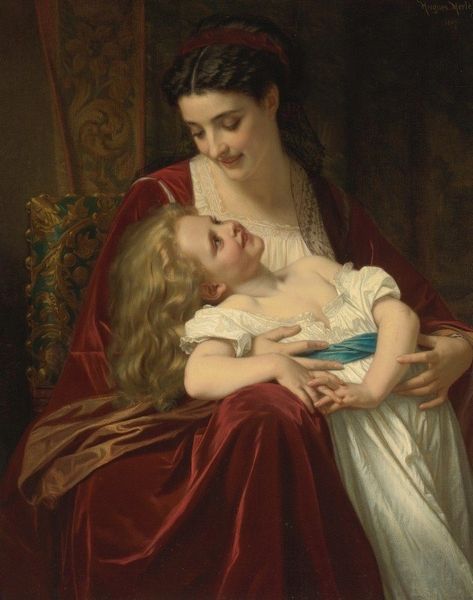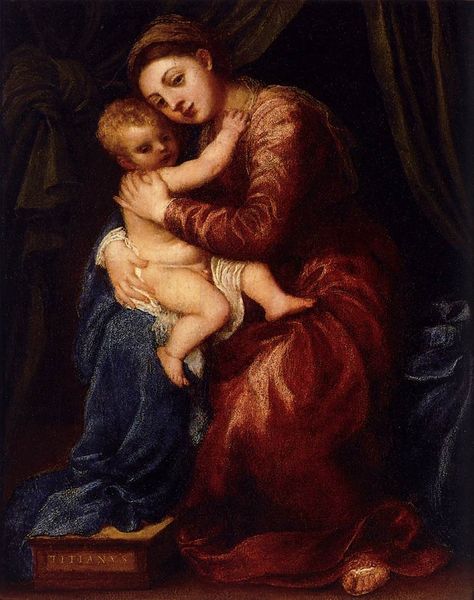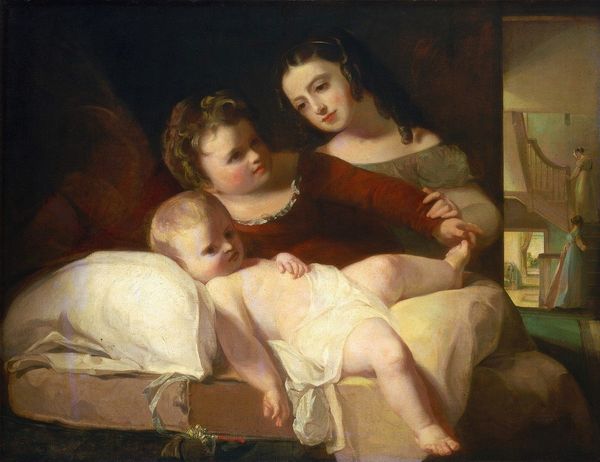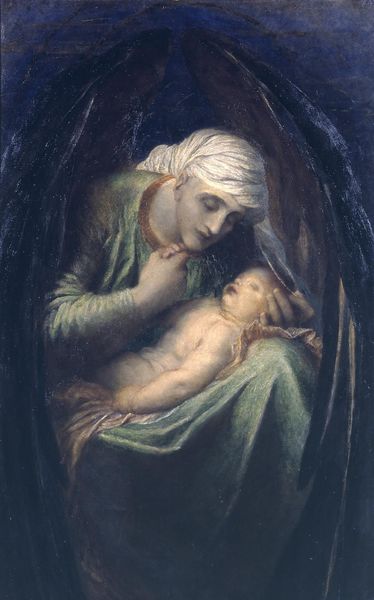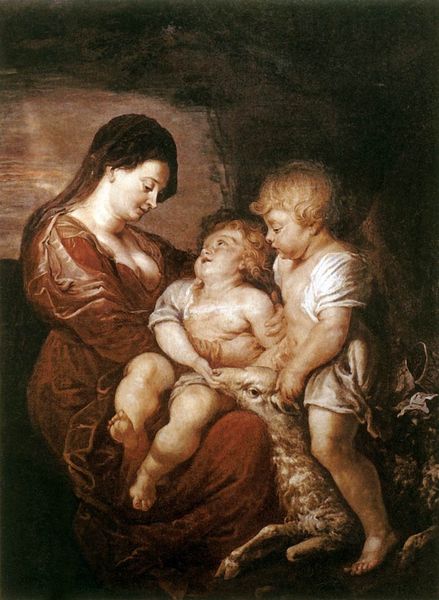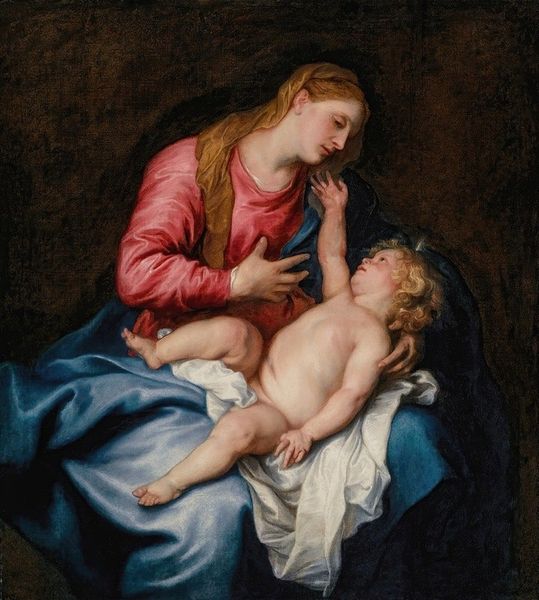
Dimensions: 213.4 x 157.5 cm
Copyright: Public domain
Curator: There's such intimacy captured in this work! The lighting seems to cradle the figures… almost as if shielding them. Editor: Indeed. Let’s consider Joseph Wright of Derby’s “Lady Wilmot and Her Child,” created in 1788. It is oil on canvas, though now held in a private collection, unfortunately not on public view. Curator: The swaddling—the drape of the fabrics… they act as a veil. This piece whispers of protection, of new motherhood facing the world’s gaze. Is there more here, historically? Editor: Definitely. Consider the era— late 18th century England. Wright of Derby carved out a unique space, becoming known for candlelight scenes, dramatic narratives of industry. While this image diverges from that subject matter, it still speaks to social ideals. Curator: Because motherhood became an emblem of national identity. Domesticity—the pure, self-sacrificing mother— equated to political stability? I see her elevated… set against inky darkness as if poised between the everyday and some sort of sacred space. Editor: Exactly! This portrayal aligns with wider representations intended to emphasize not only the maternal bond but also virtue within domestic life. Although painted in what many categorize as Romanticism, it also draws deeply on traditions of history painting to imbue this image with weight, suggesting importance beyond a mere likeness. Curator: She appears almost wary… Her alertness as she turns toward us is striking, suggesting the role demands constant vigilance. The dark tonality reinforces her serious air as well, making this less idealised and more a candid recognition of motherhood. It reflects that feeling many have that parenthood has you looking around, ready. Editor: The political implications here should not be overlooked; through representations of mothers from upper classes, moral conduct extended from domestic life directly to national discourse! Wright plays with that, doesn't he? Curator: Absolutely. Editor: Seeing it laid bare now is incredible. Thank you for lending that perspective, it reframes the moment beyond personal love to include its broader sociopolitical resonances. Curator: My pleasure! A fitting piece through which we witness intimacy cast across public memory.
Comments
No comments
Be the first to comment and join the conversation on the ultimate creative platform.
